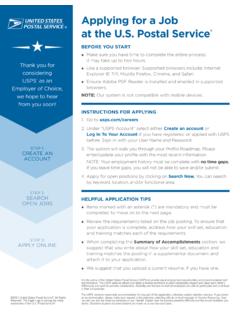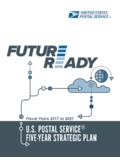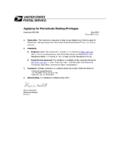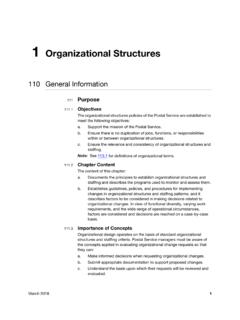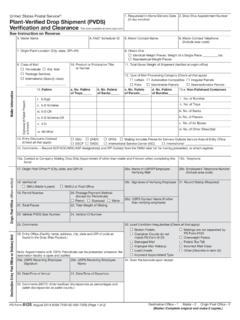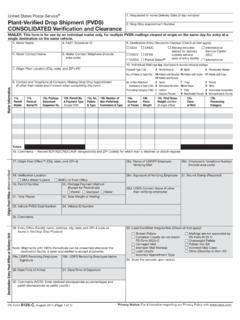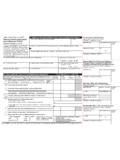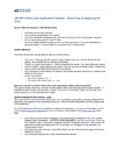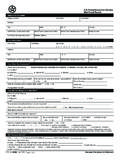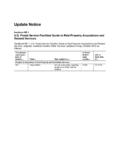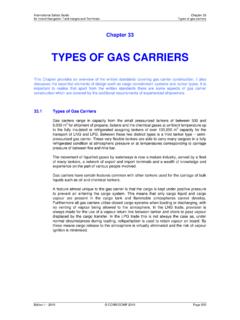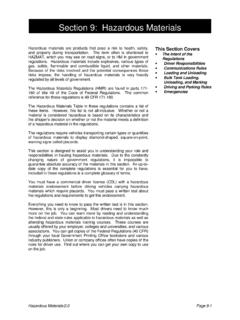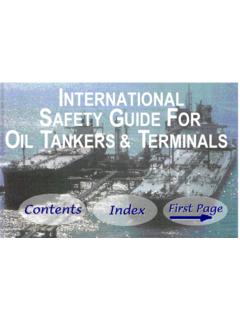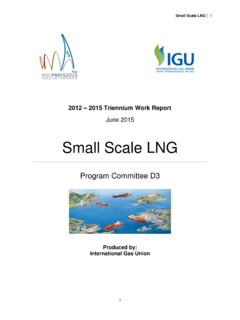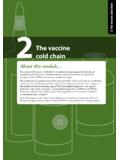Transcription of Electric Vehicles in the Postal Service - USPS
1 Electric Vehicles in the Postal Service At the turn of the twentieth century, the production of automobiles in the United States was divided almost equally among Electric -, steam-, and gasoline-powered models. The Post Office Department tried all three types for mail collection in cities. Although more expensive than horse-drawn Vehicles , motor Vehicles were able to cover the same distance in less than half the time and were gradually adopted by mail transportation contractors. First Tested in 1899. The first known test of an Electric vehicle for mail collection was in Buffalo, New York, on July 2, 1899, when Buffalo's superintendent Winton Electric Automobile, 1899.
2 Of city delivery, driven by an Electric car promoter in his Columbia In December 1899, a letter carrier tested a Winton automobile, collected mail from 40 boxes in an hour and a half Electric automobile for mail collection in Cleveland, Ohio. less than half the time it took with a horse-drawn wagon. (pictured in The Automobile, January 1900). In December 1899, a Winton Electric automobile was tested for mail collection in Cleveland, Ohio. The letter carrier collected mail from 126 boxes along a 22-mile route in two hours and 26 minutes, during a snowstorm. With a horse and wagon, it usually took six hours. In 1900, Postmaster Freeman Dickerson tested automobiles in Detroit, Michigan.
3 An Electric model by the Wood Motor Company was tested on January 10, 1900, for carrying mail between the main Post Office and its stations. On February 14, a gasoline- powered model by the Detroit Automobile Company was tested on the same routes. Both Vehicles were more than twice as fast as Riker Electric Mail Wagon, 1900. horse-drawn wagons, although the gasoline-powered automobile Two Riker Electric mail wagons were being used in Washington, , by August 1900. was slightly faster. Dickerson informed Second Assistant (pictured in The Automobile, August 1900). Postmaster General William Shallenberger that in his opinion an automobile operated by gasoline will be far preferable for carrying mail, as it would not have to spend equal hours out of Service , In Washington, , two Riker Electric mail wagons were being used by August, 1900.
4 The Riker Motor vehicle Company of Elizabethport, New Jersey, designed the vehicle specifically for Postal use. It weighed 1,800 pounds and could carry 200 pounds in addition to its operator. On one charge, it could travel 25 miles at 12 miles per hour. The first known contracts for mail transportation by automobile were for Electric models: Columbia Electric Delivery Wagon, 1901. A Columbia Mark XI Electric delivery wagon, built by In March 1901, the Post Office Department contracted with the Electric vehicle Company of New York, the Electric vehicle Company of New York for the transported mail between the Buffalo Post Office transportation of mail between the Buffalo Post Office and a and a temporary Postal station at the nearby Pan- temporary Postal station at the nearby Pan-American American Exhibition from May through October 1901.
5 It could carry 1,000 pounds besides the driver Exhibition, which ran from May through October 1901. and letter carrier and was able to travel 40 miles on one charge. 1. Dickerson to Shallenberger, January 31, 1900, "Records of the Division of Motor vehicle Service ," Record Group 28, National Archives and Records Administration. Vehicles on some city routes spent 12 hours a day or more in Service . 1. In October 1901, the Department contracted with the Republic Motor vehicle Company for five Electric Vehicles , with operators, to collect mail from boxes in Minneapolis and to carry mail between the Minneapolis Post Office and its stations from January 1, 1902, to June 30, 1903.
6 Some rural mail carriers, who supplied their own Vehicles , also used Electric models. According to an article in the May 9, 1909, issue of The New York Times, a rural carrier in Manchester, New Hampshire, used his Waverley Electric automobile to deliver mail during the warmer months of the year beginning in 1905. In 1909, Electric mail trucks were put in Service in New York City and Boston. During the 1911 Christmas season, 2. New York's Electric Vehicles operated night and day, with batteries and drivers changing every eight hours. There were hundreds of car companies nationwide, and mail contractors often used cars of local For example, in the mid-1910s, an Electric automobile made by the Argo Electric vehicle Company of Saginaw, Michigan, was used by the Saginaw Post Office.
7 In 1916, an Electric mail truck built by the Walker vehicle Company of Chicago was used in Chicago. Parcel Post Service , which began in 1913, increased the need for motor Vehicles because more and heavier packages began entering the mailstream. Harper's Weekly opined that under the most ordinary conditions, one motor vehicle can do the work of three horse-drawn wagons. 4 In 1913, the Post Office Department purchased 41. Vehicles to test in 10 cities, to see if owning motor Vehicles was cheaper than leasing them. After a thorough comparison, the Department decided in favor of ownership in some cities. In 1914, government-owned and - operated motor vehicle Service began in Washington, , and was gradually introduced to other cities.
8 The Department used gasoline-powered Vehicles , in part because Electric Vehicles lacked sufficient speed and In 1915, William H. Haycock, superintendent of mails in Washington, , told the Electric vehicle Association if machines of the Electric type can be built with sufficient speed and hill-climbing qualities to meet the requirements of the collection Service they would undoubtedly be found to be particularly desirable .. the fact that Electric machines are so much more simple of operation and can be easily driven by carriers, without the extra cost of chauffeurs .. is a decided advantage in their Although Electric Vehicles held on in the commercial market longer than in the passenger market, production gradually shifted to gasoline-powered models.
9 In 1914, in New York the state with the most registered Vehicles . Electric Vehicles accounted for about 6 percent of passenger cars and 29 percent of commercial By 1917, however, nearly all of the commercial Vehicles manufactured in the were gasoline Electric Vehicles , 1950s 1980s The Post Office Department began to motorize city delivery routes in the 1950s in response to unprecedented suburban growth and soon began to experiment with Electric Vehicles in its quest for efficient, cost-effective delivery Vehicles . The earliest city delivery Vehicles consisted of Jeeps, sit-stand trucks, and three-wheeled mailsters.
10 2. The Commercial vehicle , February 1912, 76. 3. Gasoline- and steam-powered automobiles were also used. In his book Motorized Mail, Jim Bruns pictures gasoline-powered automobiles used in Baltimore and a steam-powered model used in Boston in 1906 (James H. Bruns, Motorized Mail, Krause Publications, Iola, WI, 1997, 78-79). 4. Harper's Weekly, December 7, 1912. 5. Detailed cost analyses of vehicle ownership included the costs of oil and gas. See, for example, the Annual Report of the Postmaster General, 1916, 124, and 1917, 102-104. 6. The New York Times, February 7, 1915. 7. The Automobile, March 19, 1914; 631.
